Discover 15 hidden attractions, cool sights, and unusual things to do in San Sebastián (Spain). Don't miss out on these must-see attractions: Urgull, The Comb of the Wind, and Miramar Palace. Also, be sure to include San Sebastián Cathedral in your itinerary.
Below, you can find the list of the most amazing places you should visit in San Sebastián (Basque Country).
Table of Contents
Urgull
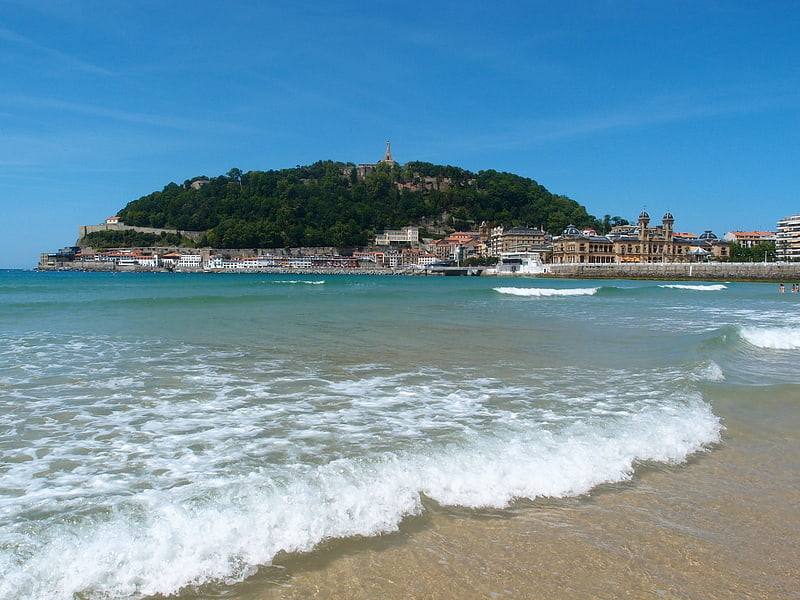
Peak with a fortress and popular views. Urgull is a hill by the ocean sitting at the heart of the Basque city of San Sebastián, Gipuzkoa, Spain. The hill shapes along with Mount Ulia and Igeldo the city's coastline relief, standing at the northern end of a peninsula formerly linked to mainland by a spit of sand between the river Urumea and the Bay of La Concha.
The hill became a defense point since the early ages of the city foundation in the 12th century, but the walls and the military structure were reinforced especially after the modern state boundaries took shape in the 16th century. The hill is topped by a stronghold (headquarters, barracks and warehouses), the Mota Castle, but it had a chapel and a conspicuous 12 metre-long sculpture of Jesus Christ added in 1950, now towering over the bay.
The hill (as well as the city) was a hotspot for military operations, like the ones of the Siege of San Sebastián (1813) and the assaults of 1823, 1836 and 1876 (Carlist Wars). The hill lost its military interest on account of the city's newly acquired tourist resort status and was sold to the city council in 1924. Urgull shows nowadays a tree-covered surface for the most part, picturesque military structures reminiscent of other times and pleasant promenades with outstanding views over the bay and the city. The rooms of the stronghold at the hill top accommodate a small history museum, part of the major San Telmo Museoa located at the south-eastern access of the hill.[1]
Address: Pasealeku Berria, 20003 San Sebastián (Centro San Sebastián)
The Comb of the Wind
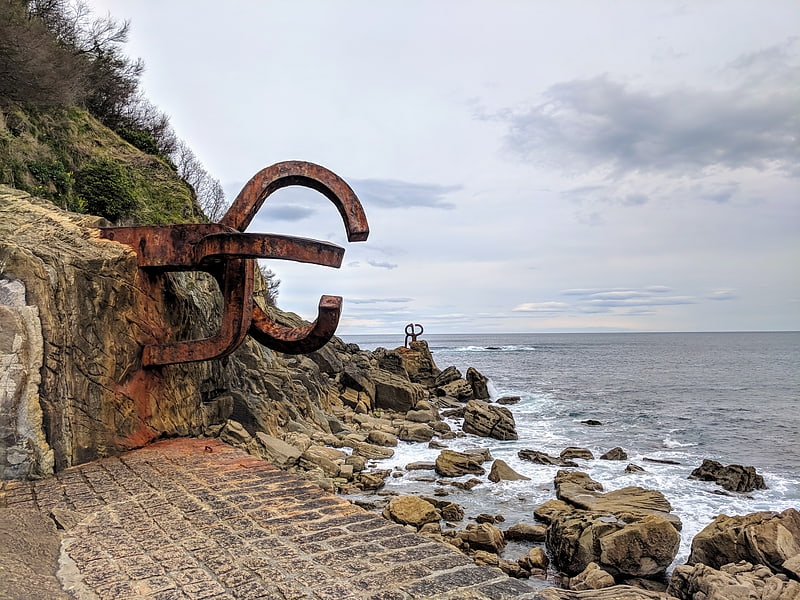
Also known as: Peine del Viento
Sculpture by Eduardo Chillida. The Comb of the Wind is a collection of three sculptures by Eduardo Chillida arranged as an architectural work by the Basque architect Luis Peña Ganchegui. For both, this is one of their most important and well known works.
The Comb of the Wind is located at the western end of La Concha Bay, at the end of Ondarreta beach, in the municipality of San Sebastián, in the province of Guipúzcoa, in the Basque Country of Spain. It is made up of three of Chillida's monumental steel sculptures, weighing 10 tons each, embedded in natural rocks rising from the Cantabrian Sea.
The work was completed in 1976. In addition to the sculptures, a viewing area was created on the nearby coast that includes "blow-holes", or wave-driven outlets for air and water.[2]
Address: Eduardo Chillida Pasealekua, 20008 San Sebastián (Antiguo - Ondarreta)
Miramar Palace
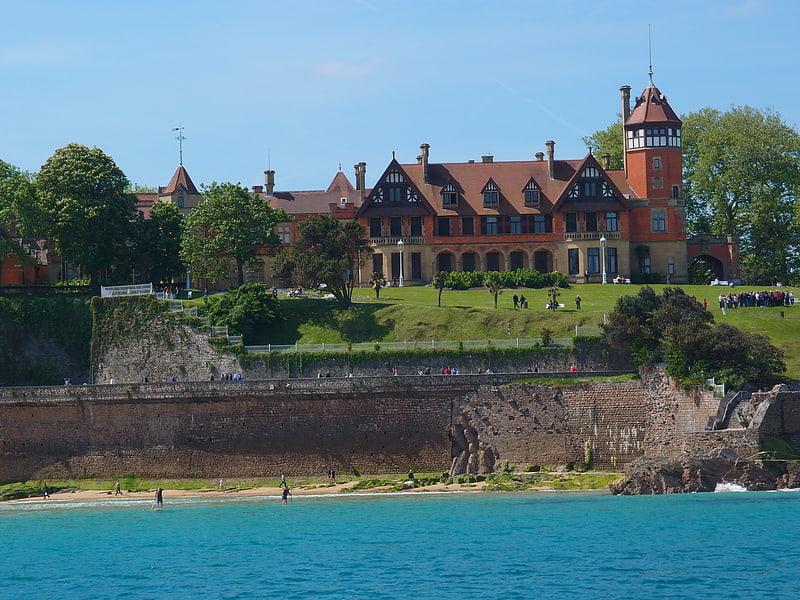
Also known as: Palacio de Miramar
Palace in San Sebastián, Spain. The Miramar Palace is a late 19th-century palace located on the La Concha Bay of the city of San Sebastián, Basque Country, Spain. It was built in 1893 commissioned by the Spanish Royal Family, based on an 1889 project by English architect Selden Wornum.[3]
Address: Paseo de Miraconcha, 48, San Sebastián (Antiguo - Ondarreta)
San Sebastián Cathedral

Also known as: Catedral del Buen Pastor
Monumental Gothic-Revival cathedral. The Cathedral of the Good Shepherd located in the city of San Sebastián, Gipuzkoa, Basque Country, Spain. It is the seat of the suffragan Diocese of San Sebastián and subordinated to the Archdiocese of Pamplona y Tudela. The most remarkable religious building of San Sebastián, it is endowed with a strong verticality and is the largest in Gipuzkoa. Its construction took place in the last years of the 19th century in a Historicist Neo-Gothic style. The church, dedicated to the Good Shepherd, has held the rank of cathedral since 1953.[4]
Address: Urdaneta Kalea, 20006 Donostia (Centro San Sebastián)
Tabakalera
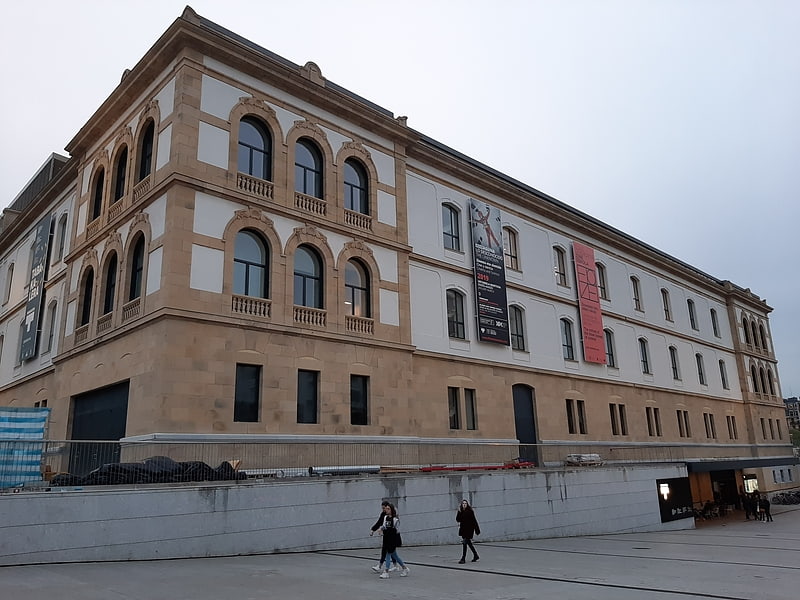
Cultural center in San Sebastián, Spain. Tabakalera is a former tobacco factory in San Sebastián, Basque Autonomous Community, Spain, which was converted into a contemporary culture centre. Located in the Egia district of San Sebastián, next to the Estación del Norte railway station and the Cristina Enea Park, it takes up one of the biggest plots of the urban area.
For 90 years (1913–2003) Tabakalera was a tobacco factory. It was one of the main employers in San Sebastián and most of the workers were women. The building took the name of the enterprise that managed the tobacco production in Spain until the privatisation process that converted Tabacalera into Altadis.
In 2003 the factory was closed by Altadis. A year later, in 2004, the San Sebastián City Council, the Provincial Council of Gipuzkoa and the Basque Government bought the building in order to transform it into the International Centre for Contemporary Culture of San Sebastián.
Since 2007 Tabakalera organised a wide sort of activities. Exhibitions like Summer by Julian Schnabel (2007), No es Neutral (2008), Egiatik (2008) and Look Again (2009) or experimental shortfilm screenings like LABO, in collaboration with Clermont-Ferrand Festival.
In 2010, refurbishment works began in the building. On September 11, 2015, the renovated building was inaugurated. The building contains exhibition halls, a multi-purpose plaza, a multi-purpose hall, a cinema theatre, a creation library called Ubik, media labs called Hirikilabs, spaces for art creation, a cafeteria called Taba, a residence for artists, and a four-star hotel, called One Shot Tabakalera House. It also hosts the headquarters of local culture institutions Kutxa Kultur, the Basque Film Archive, the San Sebastián International Film Festival, the Elías Querejeta Film School and the Etxepare Basque Institute.[5]
Kursaal
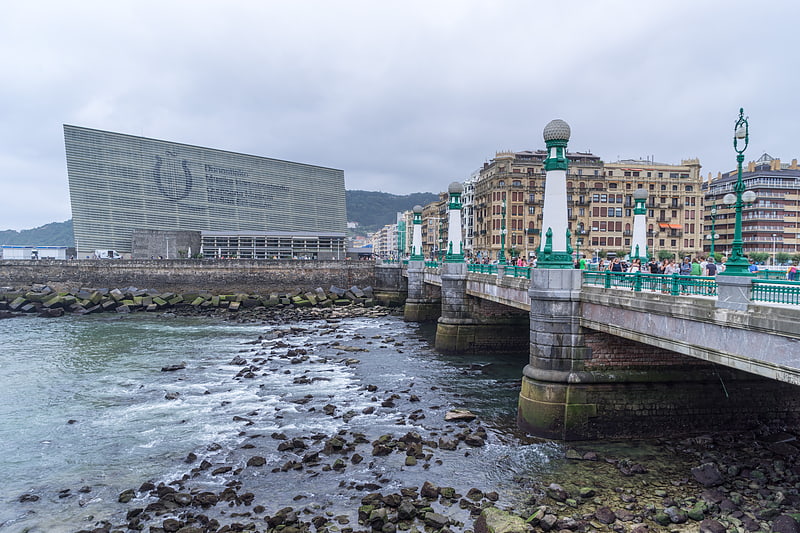
Conference centre in giant glass cubes. The Kursaal Congress Centre and Auditorium is a complex comprising several spaces: a great auditorium, many-use halls and exhibition halls. It was designed by Spanish architect Rafael Moneo, and is located in Donostia-San Sebastián. It opened in 1999.
It consists of several spaces, including the 1,800-seat concert hall, the Palacio de Congresos-Auditorio Kursaal, and is the home of the biggest film festival in Spain, the San Sebastian International Film Festival, in existence since 1953.[6]
Address: Avda. de Zurriola 1, 20002 San Sebastian - Donostia (Gros)
San Telmo Museoa
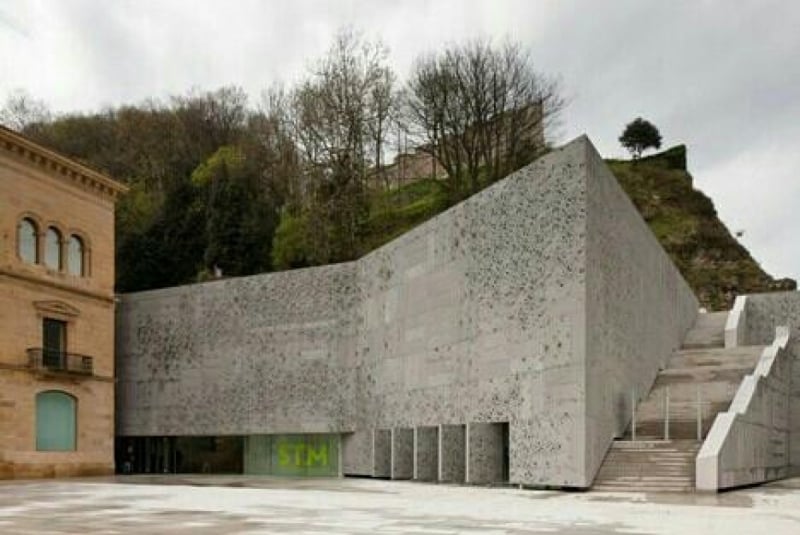
Also known as: Museo San Telmo
Museum in San Sebastián, Spain. San Telmo Museoa is a museum of the Basque society located in Donostia-San Sebastián, addressing old and contemporary Basque culture, arts and history in a European, global context. It moved to its current location in 1932, Zuloaga plaza in the old town, at the foot of the hill Urgull. It occupies a former Dominican monastery complemented by a 21st century extension.
San Telmo is presented as a museum and, at the same time, as a place to disseminate knowledge and create thought; it is an instrument to understand the present and build the future from encounters with the past and with our roots. In 2011, a major makeover of its facilities took place by adding an extension to the convent and reshaping its facilities along the lines of its new conceptual approach as a museum of the Basque society and citizenship. The museum received a Special Mention in the 2013 best European museum contest organized annually by the Museum Forum.[7]
Address: Plaza Zuloaga 1, 20003 San Sebastian - Donostia (Centro San Sebastián)
Polloe Cemetery
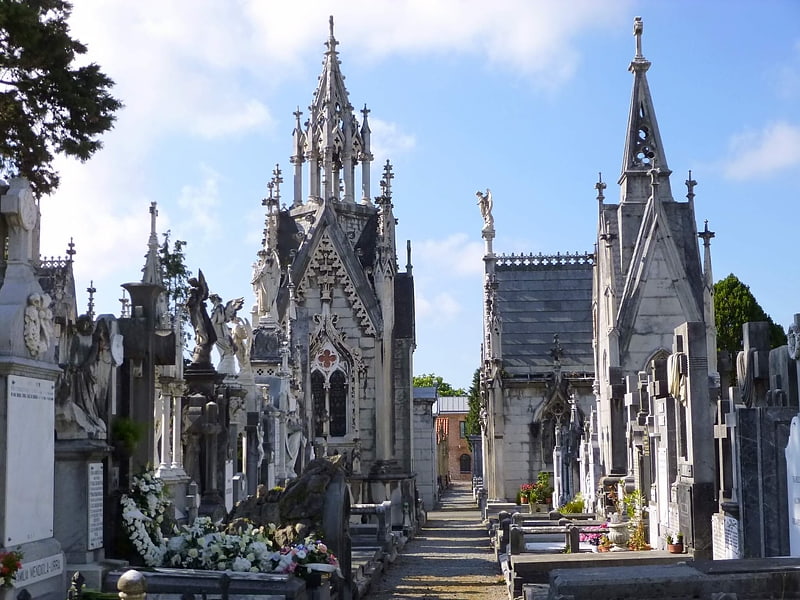
The Polloe Cemetery in San Sebastián, Province of Guipúzcoa, Spain, was constructed after the Real Cell of Carlos III, according to which the cemeteries had to be placed outside of any city. Designed by architect José de Goikoa, it was inaugurated in 1878, and the first burial took place on August 12, 1878. Its pantheons have classical compositions made by various artists.[8]
Puente de María Cristina
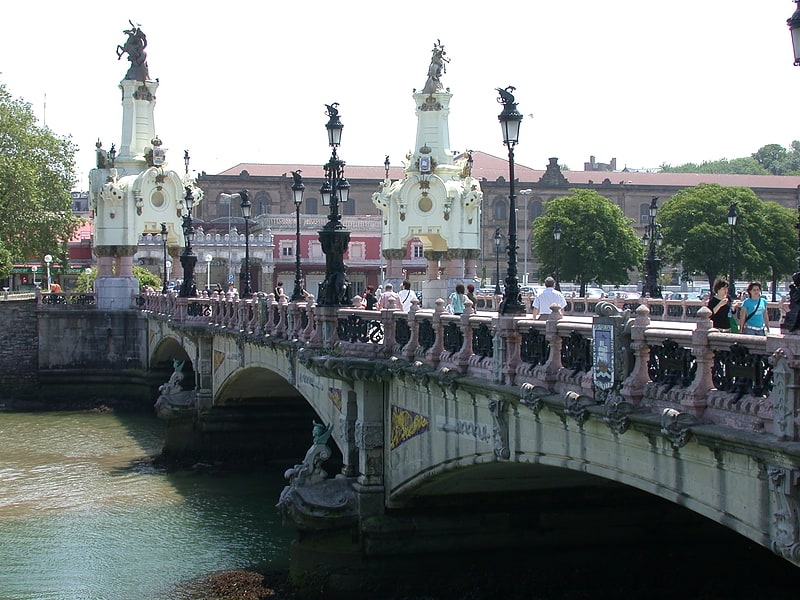
Iconic bridge for vehicles and pedestrians. María Cristina Bridge is a bridge over the Urumea river passing through the Basque city of San Sebastián.[9]
Address: Puente de María Cristina, San Sebastián (Egia)
Ondarreta

Beach
Address: Paseo Ondarreta, 20007 San Sebastián (Antiguo - Ondarreta)
Basilica of Saint Mary of the Chorus
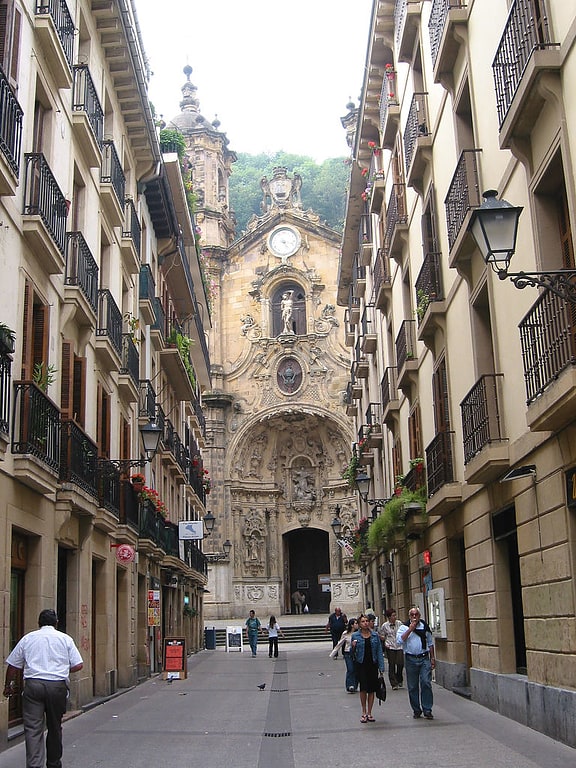
Also known as: Basílica de Santa María del Coro
Parish church in San Sebastián, Spain. The Basilica of Saint Mary of Coro is a baroque Roman Catholic parish church and minor basilica completed in 1774. It is located in the "Parte Vieja" of the city of San Sebastián, Gipuzkoa, Basque Country, Spain.[10]
Address: Calle 31 de Agosto, 46, 20003 San Sebastian - Donostia (Centro San Sebastián)
Parque de Atracciones Igeldo
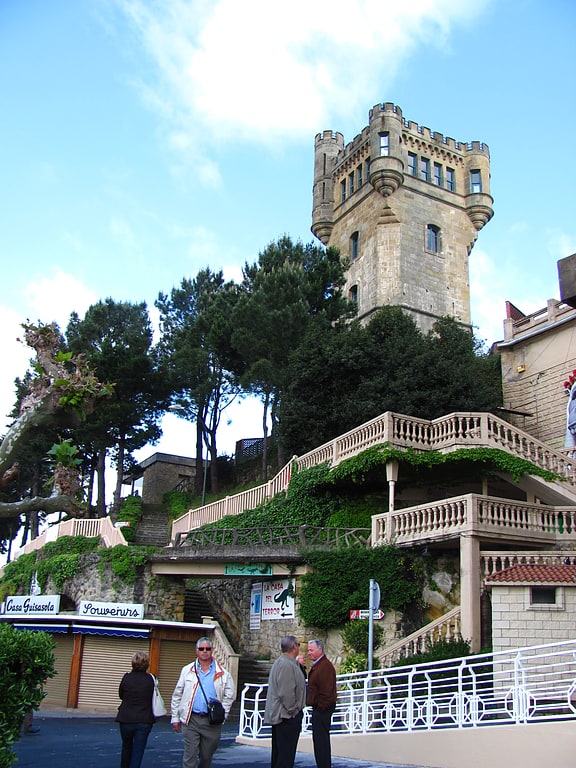
Parque de Atracciones Monte Igueldo is an amusement park located at the top of Mount Igueldo, in the El Antiguo district of San Sebastián, Guipúzcoa, Basque Country, Spain. It was inaugurated on August 25, 1912 and is still in operation today. The park can be reached by car or by funicular.
There have been three amusement parks in San Sebastian, all opened in the early twentieth century: Ulía, Martutene and Monte Igueldo. Today only Monte Igueldo remains open.
You have to pay to enter the park, and the attractions are paid separately.
Address: Itsasargi Pasealekua, 134, 20008 Donostia (Antiguo - Ondarreta)
Martutene
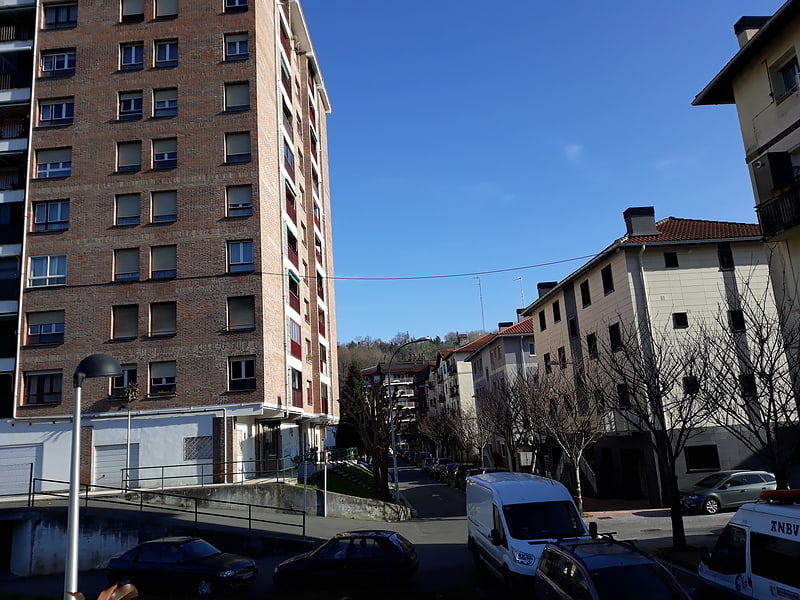
Neighbourhood in Spain. For the novel with this title, see Ramon Saizarbitoria
Martutene is a neighbourhood situated south of Donostia-San Sebastián, Guipúzcoa (Spain) on the banks of the river Urumea, between the neighbourhoods of Loiola, and the village of Astigarraga. In this neighbourhood, are located an industrial area, a football pitch for lower leagues, a disused vocational training building, and a prison that carries its name, Prison of Martutene.[11]
Pasaia
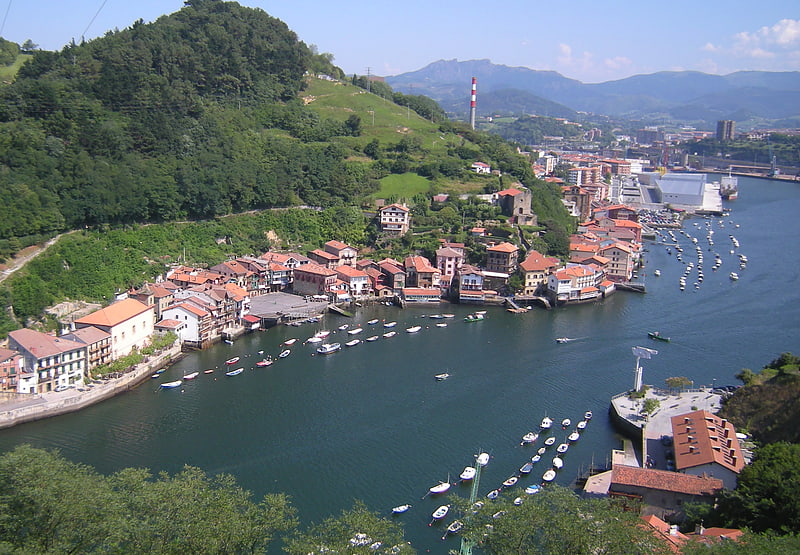
Town in Spain. Pasaia is a town and municipality located in the province of Gipuzkoa in the Basque Autonomous Community of northern Spain. It is a fishing community, commercial port and the birthplace of the famous admiral Blas de Lezo.
Pasaia lies approximately 5 kilometres (3.1 mi) east of Donostia's centre, lying at the foot of Mount Ulia and the Jaizkibel massif. The municipality numbers 16,056 inhabitants (as of 2008 estimates), clustering around the Bay of Pasaia in four nuclei, namely Pasai San Pedro, Pasai San Juan (or Donibane in Basque), Antxo and Trintxerpe, with each part showing distinctive features.[12]
Mercado San Martin
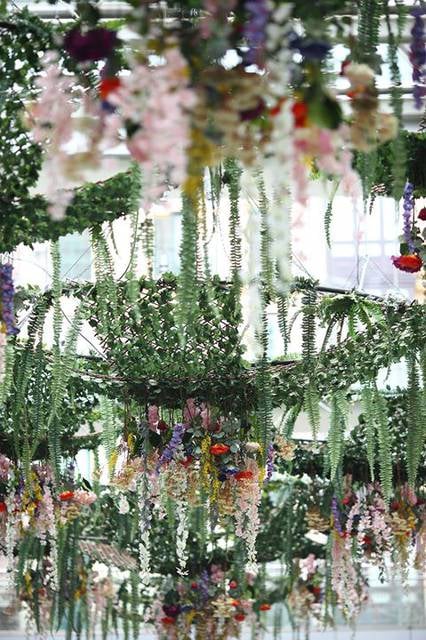
Shopping, Shopping centre, Farmer's market
Address: Calle Urbieta 9, 20006 San Sebastián (Centro San Sebastián)